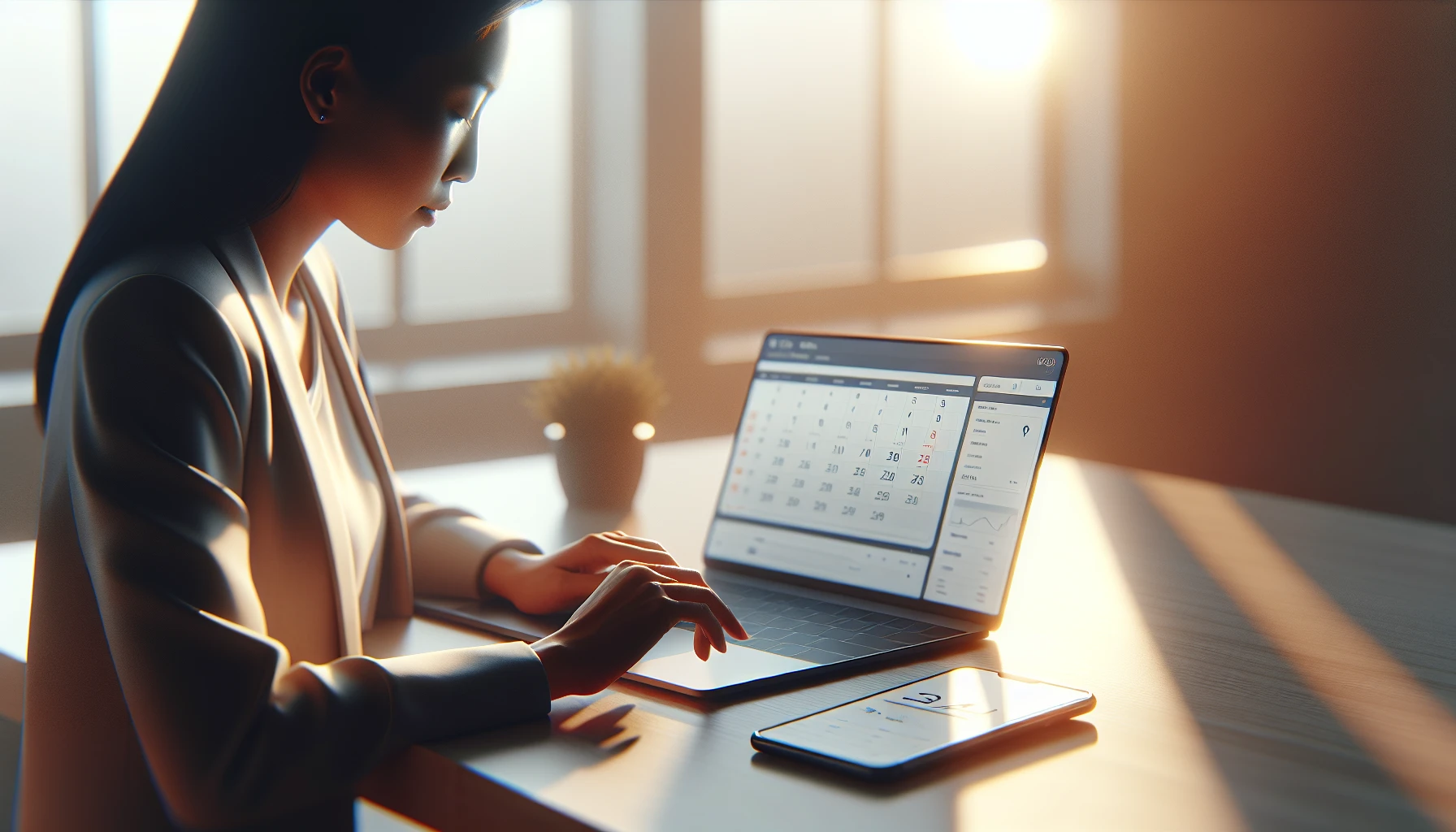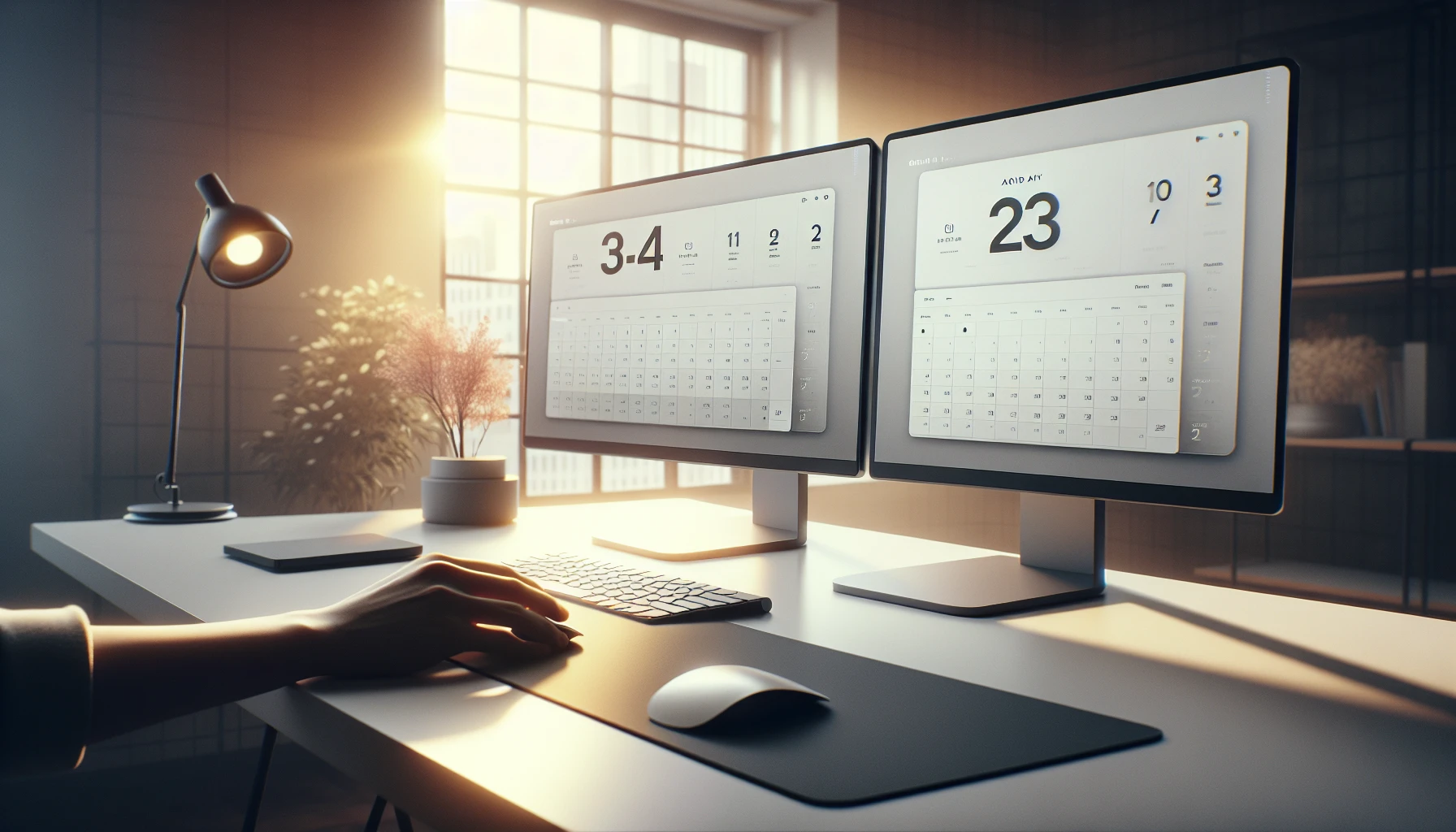· Ricardo Batista · 12 min read
How to write effective meeting reminder emails - Quick tips
Meeting reminder emails help cut no-shows and keep meetings clear, using easy calendars and scheduling tools to ease planning woes.

The idea behind meeting reminder emails is clear but not hard to use. They prompt you with key meeting details and help lower the chance of missing appointments when you get a quick note. The guide offers easy steps and sample tools, like Calendly, to make scheduling less stressful and more organized.
Key Takeaways
- Keep meeting details clear and simple to help avoid mix-ups
- Use scheduling tools like Calendly and YouCanBookMe to save time and effort
- Our expertise shines in automatically pinging attendees who arrive late to your meetings
- Friendly, easy-to-read emails boost attendance and reduce no-shows
- Automation and a clear message make setting up meetings way less stressful
Effective Meeting Reminder Emails and Their Role in Reducing No-Shows
Meeting reminder emails play a key role in reducing no-shows. When you send a timely reminder, you not only boost attendance but also show respect for everyone’s time. Attendees get a nudge that the meeting is coming up, and sometimes even if they’re running behind schedule, these reminders help them get organized quickly before joining.
Understanding the Importance
Meeting reminders aren’t just a courtesy; they’re a practical tool. They help everyone stay on track and reduce the chaos of late arrivals. It’s common for people to forget, especially if a meeting was scheduled weeks in advance or if a busy week throws off their memory. By reminding them, you set clear expectations.
Some benefits include:
- Keeping everyone on time
- Providing necessary meeting details so participants can prep ahead
- Decreasing the number of last-minute cancellations or rescheduling
Psychological Impact of Reminders
Regular reminders can make attendees feel more valued. When someone receives a reminder, it suggests that a lot of thought has gone into organizing the meeting and that their presence is important. This also relieves anxiety for those who worry about missing important points or deadlines.
A good reminder email makes it clear that the meeting is a shared effort and that everyone’s punctuality contributes to a productive discussion. This sense of responsibility can trigger a mild, positive pressure that encourages punctual behavior.
Crafting Personalized and Clear Email Templates
A strong reminder email is simple. Use clear language and personalize your message as much as possible. In the digital age, personalization means more than just putting the recipient’s name at the top—it involves tailoring the message content so it feels genuine.
Using Dynamic Subject Lines
Your subject line is the first thing an attendee sees. Instead of something generic like “Meeting Reminder,” try adding a personal touch. A dynamic subject line might say, “Hey Alex, don’t forget our catch-up at 3 PM today” or “Reminder: Your session starts in 30 minutes.” This instantly grabs attention and signals that the email is meant specifically for them.
Tips for dynamic subject lines:
- Keep it short and to the point
- Use clear time references (e.g., “in 30 minutes”, “tomorrow morning”)
- Include the meeting title or purpose if space allows
Incorporating Key Meeting Details
While personalization is important, clarity is even more so. Every reminder should include the core details:
- Date and time (including time zone if needed)
- Meeting link or location
- Agenda or key topics
Using bullet points can help break up the content and keep it readable:
- Meeting Date: MM/DD/YYYY
- Time: HH:MM AM/PM (Time Zone)
- Location: [Link or Physical Address]
- Agenda: Brief bullet points of topics
This layout minimizes confusion and ensures every recipient knows exactly what to expect when they get online or arrive at the meeting place.
Utilizing Scheduling Tools
Remember the convenience that scheduling tools bring. Tools such as Calendly and YouCanBookMe help streamline the process. You can embed links to these tools within your reminder emails so attendees can confirm, adjust their attendance, or even schedule rescheduling if needed.
These tools allow participants to:
- See available times in real time
- Quickly confirm or change their meeting times
- Sync with their personal calendars, reducing the chance of miscommunication
If you need a quick change, a well-integrated tool means you don’t have to send another separate email to ask if someone is ready to reschedule. This quick access to schedule management directly from the reminder email improves overall flow during busy periods.
Integrating Automation Tools and Workflows
Automation is crucial for streamlining your meeting processes. With the right tools, you can automate sending reminders, track attendance, and even send automated messages to attendees who join late.
Streamlining Processes With Scheduling Tools
Automation tools integrate seamlessly with scheduling platforms. When you set up a meeting, linking it with tools like Calendly or YouCanBookMe means that all key details are automatically pulled into your reminder emails. This reduces the chance of human error and saves time.
How automation helps:
- Automatically generate unique meeting links for each participant
- Sync meeting times across various calendar apps
- Reduce repetitive manual tasks by reusing templates for similar meetings
When your meeting invitations are automated, you minimize confusion and offer a consistent message every time. This reliability is appreciated by busy professionals who rely on precision and timeliness.
Enhancing Productivity With Automation Tools
Investing in tools like Booknetic and Sender can further boost efficiency. These platforms let you create detailed workflows that not only send reminders on time but also provide you with data on who has viewed or responded to the reminder.
Key points:
- Automated pings help identify individuals who frequently join late. For example, if someone’s consistently late, you can send a more targeted follow-up.
- Data collection from automated systems can highlight patterns and help refine your meeting processes.
- Automated email sequences ensure every aspect of the meeting process, from initial invite to follow-up, is handled with precision.
Automation is your friend when trying to maintain a smooth, professional meeting schedule. The goal is not to overwhelm your recipients but to provide a helpful nudge whenever they need it.
Best Practices and Expert Tips
Leveraging expert advice along with industry practices can take your reminder emails to the next level. Experienced professionals like Jessica Malnik and organizations like Krisp offer great insights on making reminders more effective and engaging.
Insights from Industry Leaders
Jessica Malnik, among other industry experts, emphasizes that reminder emails should be proactive rather than reactive. This means:
- Sending the reminder at a planned interval before the meeting, not after counting on last-minute updates.
- Including a clear agenda so recipients have a reference point for what will be covered.
- Avoiding overly formal language, especially when dealing with younger professionals. A relaxed and friendly tone can engage even busy 20-year-olds who appreciate a more informal message.
Industry guides also suggest that effective emails are concise. While details are essential, keeping the message brief avoids overwhelming the recipient. For additional tips on writing reminder emails, you might check out resources like How To Write Reminder Email For Meeting for more specifics.
Tips for Meeting Audio and Enhancements
For meetings involving remote participants, audio quality can be just as important as the email content. Using tools like Krisp can eliminate background noise and improve the clarity of the conversation. When a reminder email supports a meeting with exceptional audio tools, attendees are more likely to join on time and stay engaged.
Consider these points when enhancing your meeting reminder:
- Notify participants of any special audio or video features they might need to adjust for.
- Include links or brief instructions if they need to download an app or update their software.
- Ensure that the meeting link is clearly visible and tested before the meeting begins.
Good audio quality not only improves communication but also reduces the frustration of having to repeat key points. When things run smoothly, everyone feels more inclined to attend the meeting as scheduled.
Advanced Techniques for Scheduling Flexibility
Flexibility is a must for modern meetings. As work schedules change on a dime, offering options for rescheduling can maintain attendance without causing further disruptions.
Offering Rescheduling Options
Sometimes, even the best reminder emails may catch someone at an inopportune time. Offering straightforward ways for attendees to reschedule can keep the meeting productive without forcing awkward cancellations. In your emails, include:
- A simple link to a rescheduling interface provided by your scheduling tool.
- Clear instructions on how to select alternative times.
- A contact method for those who prefer to talk directly about rescheduling.
Using scheduling tools like Calendly or YouCanBookMe makes rescheduling less stressful. They provide automated, real-time availability, which prevents the back-and-forth that often leads to confusion. Additionally, a small note in the email explaining that rescheduling is an option demonstrates understanding and flexibility.
Integrating Marketing Automation and Email Sequences
For recurring meetings or webinars, consider integrating marketing automation. Tools like Sender can work with your email system to send out a series of emails:
- A long-term reminder when the meeting is booked
- A mid-term reminder a day before
- A final, last-minute nudge for those who haven’t yet confirmed
This multiphase approach can significantly increase your meeting attendance. Email sequences reduce dependency on a single reminder and provide continuous support to the attendee, ensuring the details stay fresh in their mind.
Additionally, incorporating relevant marketing content into the reminder emails can deliver additional value. For instance, if the meeting is part of a training series or a product demo, including related blog posts or video links can make the reminder more engaging and useful.
Automatically Ping Late Attendees
One unique aspect of effective meeting reminders is the ability to automatically ping attendees who join late. This helps keep the meeting flowing and reminds latecomers of the importance of punctuality even after the meeting has started.
How Automatic Pings Work
Automatic pings are part of many modern meeting software suites. These pings send notifications to attendees whose join times are delayed. The process can be set up to:
- Trigger an email or SMS after a set period post-meeting start
- Provide a quick link for the latecomer to join the meeting
- Include a brief recap or reminder of the meeting’s agenda to help them catch up
This system isn’t about reprimanding people for being late but rather about keeping the meeting on track. Automated pings can serve as a gentle nudge that ensures every participant pulls their weight. The reminder email might include a friendly note: “We noticed you’re joining a bit late – here’s a quick summary of what’s been discussed so far!”
Tools to Track Attendance
Tracking and managing attendance is much easier with automation tools. Here are some helpful pointers:
- Use scheduling tools that offer analytics, which can pinpoint patterns in late arrivals.
- Implement attendance tracking features available in many conferencing platforms.
- Configure the system so that notifications are sent automatically after a defined delay, minimizing manual checks.
Integrating these tools into your meeting flow can improve overall productivity. Not only do they alert you to late arrivals, but they also help gather data that can inform future scheduling decisions. Effective tracking means that you can adjust reminder timing and message content based on attendance patterns, leading to smoother meetings overall.
Using such techniques is beneficial for teams that operate across different time zones or on a flexible schedule. When every participant is informed and reminded at the right moment, the meeting’s structure remains intact regardless of minor disruptions.
For more detailed insights on sending out effective reminders, you might also find this guide useful: How To Send A Meeting Reminder Email.
When creating meeting reminder emails, blend all these elements—personalization, clear details, automation, and flexibility—to foster an environment where meetings start on time and run efficiently. Remember the goal is to support each participant by giving them straightforward, timely nudges, whether it’s a reminder before the meeting or an automatic ping when they join late. This modern approach makes it easier for teams to stay connected and engaged in a fast-paced, ever-changing work landscape.
Conclusion
We’ve walked through how simple meeting reminder emails can keep your appointments on track. The main idea was to use friendly, clear messages that help reduce no-shows and keep everyone in the loop. One important takeaway is making your meeting details easy to read, so folks know what to expect, and another is using scheduling tools like Calendly and YouCanBookMe that simplify the whole process. There was also a focus on automating reminders, which can make rescheduling and last-minute pings a breeze.
It might feel a bit messy sometimes, but the value of clear, timely communication cannot be overstated. Remember that reducing confusion means more reliable meetings and a smoother day overall. Start by testing a simple template, then tweak it as you go until it fits your style. And if you ever need that little extra push, know that Meeting Reminders uses expert tactics to automatically ping the attendees that arrive late to your meetings. Give it a try and see how your meeting routine transforms.
Related Posts
Frequently Asked Questions (FAQs)
What are meeting reminder emails?
Meeting reminder emails are short messages you send before a meeting to confirm the timing, location, and key details. They keep everyone on track and reduce the chance of no-shows.
How do meeting reminder emails help reduce no-shows?
They remind participants about the meeting, making sure no one forgets. With friendly, clear reminders, everyone becomes more aware of the schedule, and it minimizes last-minute cancellations.
How do tools like Calendly and YouCanBookMe make meeting reminders easy?
Using tools like Calendly and YouCanBookMe lets you set up automated reminder emails. They sync with your calendar, so you don’t have to send each reminder manually.
What are some best practices for crafting clear meeting reminder emails?
Keep the message friendly and simple; include key details like time, date, and location. Break the info into short lines and use a casual tone so recipients can quickly get the message.
How do you automatically ping attendees who arrive late to your meetings?
Our system can automatically ping attendees if they’re running late to your meetings. This feature makes sure everyone knows the status without a lot of extra work; it’s a neat trick that keeps your meetings running smoothly.



